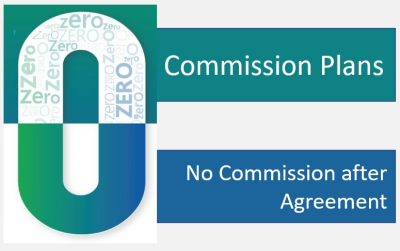
In this article, you will discover best practices for managing a successful sub brokership in India.
For running any business, there are certain best practices that one needs to follow, and a sub broker business is not an exception.
To manage your business well, you need to follow certain factors, which will also help you grow your business multifold.
We have identified six best practices that every sub broker must implement to grow, expand, and manage their business smoothly.

Best Practices for Managing Sub Brokership
Check out these 6 best practices to run a successful Sub Broker business in India.
Registration
The very first best practice for sub brokership is getting the registration done from SEBI as an Authorised person. This will ensure that you are eligible to provide sub broker services.
This is necessary for every sub broker as it will keep legal issues at bay. Without registration, if you try to provide sub brokers services, there can be issues and legal problems.
Moreover, it is mandatory to be registered with SEBI as an authorized person when you are starting your journey as a sub broker.
You can apply for a sub broker position with the broker of your choice, and then when the process of onboarding you starts, it includes the registration process too.
As per recent SEBI regulations, stock brokers are only allowed to deal with individuals or firms who want to register as sub brokers if they are willing to register with SEBI.
After the registration is done, you will get an Authorized Person Certificate.
This helps manage your business in two ways – as mentioned above, the first keeps you away from any legal affairs, and the second increases your business as investors and traders always put faith in agents registered by authorities like SEBI or NSE/BSE.
Regular Communication
The next best practice essential for managing your sub brokers business is regular communication with your existing and potential clients.
Even a simple email or WhatsApp message can do wonders in retaining your clients for the long term. Discussing the issues they face or things you can improve will help keep the clients with you.
To manage a successful business, you need to be aware of the client’s preferences and requirements, which can be achieved via regular communication with the clients.
Also, make sure to offer them regular stock market updates, tips, and other market-related updates to help them be updated about the same.
Updated and Knowledgeable
Another amazing Best Practice for running a successful sub brokership is providing the best suggestions and market updates to your clients.
You need to be updated and acquire knowledge of the market in the first place, and this is the third best practice for managing a successful sub broker business.
Always monitor the economy, businesses, and markets to capture the best and deliver it to the clients. Moreover, when giving the clients any updates about the market, be more specific.
Even a college-going student interested in the stock market can say whether there is an uptrend or downtrend.
As a sub broker whom the clients pay for managing their investments, you must be more specific in your approach to gain and retain clients.
Also, reach out to your clients during a significant market event. Explain to your clients how the market event that has just happened can affect their investment portfolio or the trading they do.
This will help the clients better manage their assets and also minimize risk. This eventually helps you as a sub broker to build goodwill amongst the clients and, in turn, a loyal clientele.
Tailor-made Research & Advisory Services
Research and advisory are usually there with all sub brokers, so what’s the hype around it? However, to manage your sub broker business smoothly, you must provide tailor-made research and services.
As the main broker provides research reports and other details, you cannot just forward them to the client and expect them to understand everything.
It would be helpful if you reviewed which research reports, documents, and information are required by which client and then shared them.
Every investor is different so are their investment goals and risk-taking abilities.
It will help if you ensure that the information you offer and the investments you advise align with the client’s requirements and investment goals.
Similar Topics on Sub Broker
Adequate Employee Strength
The fifth thing you’ll need to do is maintain adequate employee strength in your firm. You need to align the number of employees as per your clientele.
If you have a huge clientele, then you need to increase the number of employees so that none of the client’s requirements goes unnoticed simultaneously.
If you are starting your business and have a smaller client base, then you can have a small number of employees so that you do not overstaff.
Don’t Assume the Client knows Everything
As a sub broker, if you think that you have opened 10 Demat accounts in a month and all of them are going to start trading in the same month itself, then you are wrong.
Most of the people who open accounts need assistance.
Whether it is related to understanding the trading platform, or how trading happens or how brokerage is calculated and how to deposit or withdraw money, and a lot more.
So, if you think you open an account and money will follow, you are doing it completely wrong.
You need to provide complete support to your clients, whether new or old, to generate business from them.
As you can find in our previous articles, client activation is a pivotal role of sub broker.
For that, you must be on your toes to help clients in their trading and investment journey. This will allow your business to run smoothly, and it will grow.
Check out these amazing Sub Broker Partner Businesses
| Upstox Partner | Angel Broking Partner |
| Zerodha Partner | Motilal Oswal Partner |
| Sharekhan Partner | Edelweiss Partner |
| 5Paisa Partner | IIFL Partner |
| Kotak Securities Partner | ICICI Direct Partner |
Best Practices for Successful Sub Brokership – Conclusion
Though every sub broker’s approach varies, and that is obvious.
These are some standard best practices that any sub broker can follow to run their sub brokership smoothly and expand it over time.


